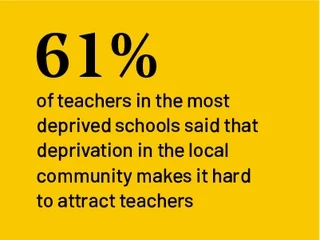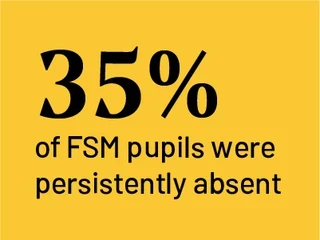
Breaking the cycle: How schools are defying the odds in the face of child poverty
Discover what schools are doing to support disadvantaged pupils and what must change to help every child succeed.
Why we must act now to support schools tackling child poverty
Schools are going above and beyond to support pupils facing disadvantage – but they can’t do it alone.
Too many schools are being stretched beyond their resources while poverty continues to hold children back. They’re doing all they can, but without systemic change, their efforts won’t be enough.
With the Government’s Child Poverty Strategy due this autumn and the 2025 Spending Review approaching, our latest research sets out nine evidence-based recommendations to help end educational inequality and ensure every child can thrive.

What needs to change
The evidence is clear: schools are stepping up – but they need systemic support.
To truly break the cycle of disadvantage, we are calling on government to take urgent action:
Fund schools where support is needed most
✓ Reflect levels of disadvantage
✓ Automatic enrolment for free school meals for those eligible
✓ Protect and increase pupil premium
✓ Improve hardship access
Ensure all children have access to the best schools
✓ Address teacher shortages
✓ Review of admission policies
Coordinate external services to provide wraparound support
✓ Embed wellbeing services
✓ Strengthen partnerships
✓ Remove the two child benefit cap
What our schools need
Based on insights from Teach First schools on the frontline of educational inequality, as well as large-scale surveys of teachers and parents, we have set out four key themes that show how schools are supporting pupils facing hardship.
They show what’s working, and what must change.

Spotlight: Theme 4
Effective and targeted use of funding
Schools are being asked to do more with less.
Core funding has been reduced, so the pupil premium is key to transforming outcomes when used effectively. But with growing pressures, schools across the country are struggling to stretch resources to cover both academic and wellbeing needs.
Headteachers told us that targeted investment is making a difference – it can improve attendance, raise attainment, and give pupils the right foundation for future success.
Smart, targeted funding is helping schools do what matters most.

How smart investment is transforming outcomes in schools:

Brigshaw Learning Partnership, West Yorkshire
Used pupil premium to support transition to secondary - boosting attendance and confidence for disadvantaged pupils.

Ark Alexandra, Hastings
Implemented a whole-school literacy strategy, funded by pupil premium – helping more pupils access the curriculum and achieve stronger results.

Knighton Mead Primary Academy, Leicester
Provided targeted, trauma-informed support for vulnerable pupils – improving attendance, wellbeing and access to learning.

Theme 1
Providing children with the best education
Great teaching remains the most powerful tool to level the playing field.
Teachers are doing all they can to maintain high standards, adapt to rising pupil need, and keep learning accessible for every child – even as budgets and staffing are stretched. But for real impact, we need brilliant teachers where they’re needed most.
Schools in the most disadvantaged areas are clear: recruiting and keeping great teachers is the single biggest challenge in raising attainment. Investment in teacher training, development and retention is vital.
Teachers don’t just educate – they empower pupils to break through barriers.


Theme 2
Support beyond the school gates
Poverty doesn’t stop at the school door.
Schools are increasingly acting as the first line of support for pupils facing issues like food insecurity, poor housing and family instability – often stepping in where public services have been cut or overstretched.
Pastoral teams, safeguarding leads and mental health professionals are essential – but not always available. Many schools told us they lack access to the wider system of support their pupils urgently need.
Schools are filling the gaps left by overstretched services.


Theme 3
Breaking down barriers to personal development
Confidence, wellbeing and opportunity matter just as much as grades.
Poverty can limit a child’s sense of self and restrict access to the wider experiences that shape success. Schools are working hard to provide enrichment activities that improve wellbeing and build key life skills – from clubs and trips to creative arts.
These opportunities not only broaden pupils’ horizons, they also support academic progress. But extracurricular provision is increasingly under pressure, especially in schools serving low-income communities.
Personal development is essential to academic success – not a luxury.

Every child deserves access to the support they need
To break the cycle of poverty, all children - especially those facing disadvantage - need access to excellent schools, great teachers and support beyond the school gates.
Schools are doing all they can, but they can’t close the gap alone. Without urgent investment and better coordination between services, too many pupils will continue to be held back.
Read our full report to explore the evidence and discover our nine key recommendations to help every child succeed.
